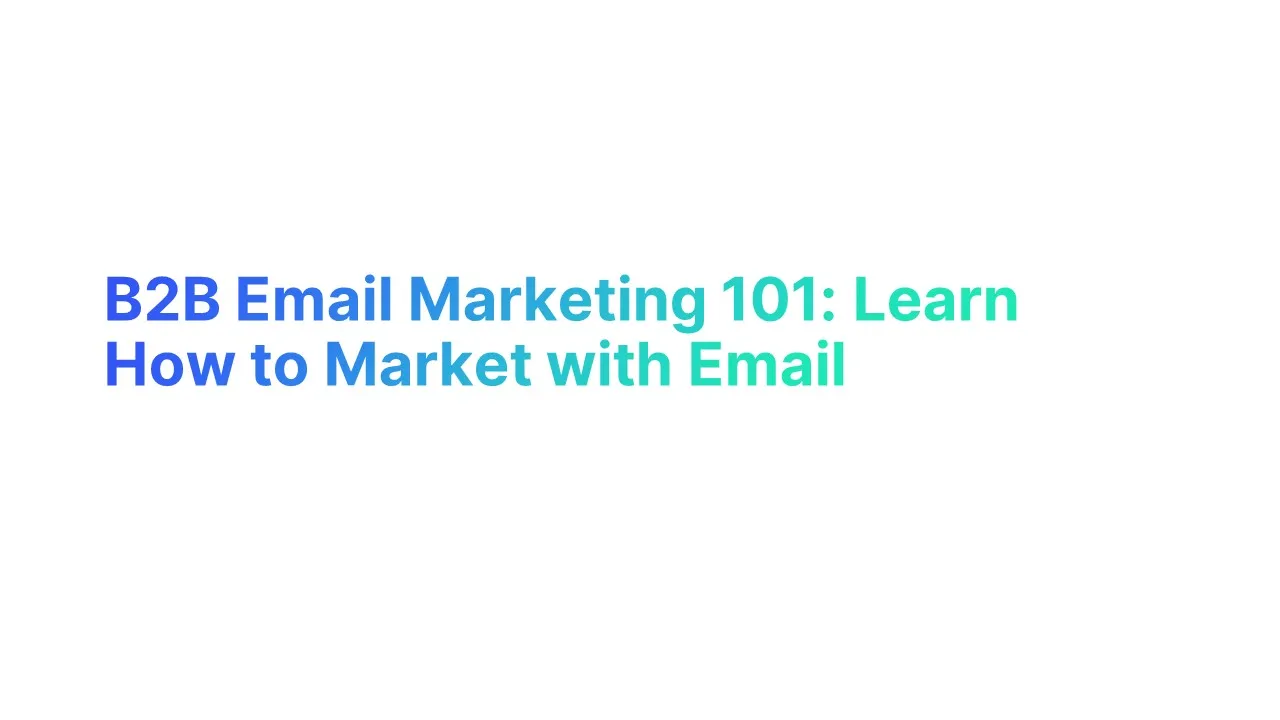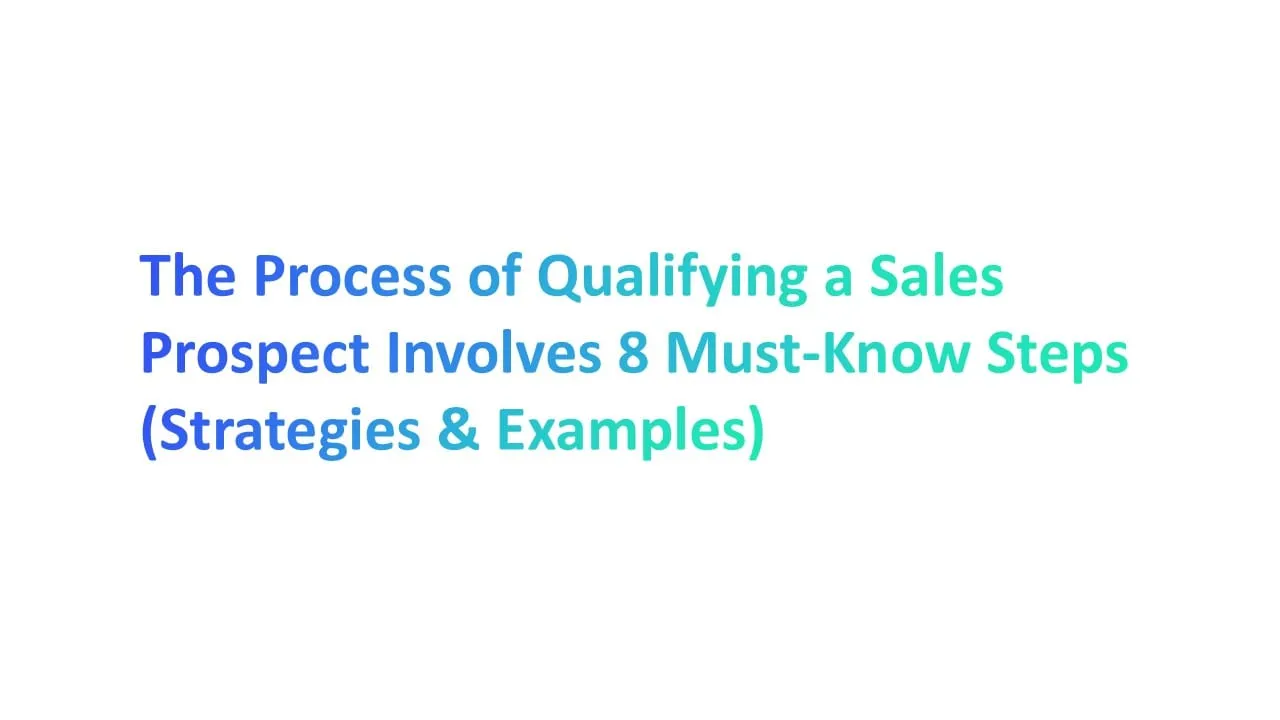Introduction to Email Marketing

What is Email Marketing
Email marketing is a strategic communication process that involves sending emails to a targeted group of recipients to promote products, services, or disseminate information.
It's an essential tool for engaging potential customers, nurturing leads, and building long-term relationships with an audience.
When to Use Email Marketing
Email marketing is versatile and can be used in various scenarios to engage with your audience. Below are some of the most effective ways to leverage email marketing:
Launching New Products or Services: Email is an ideal channel for announcing new offerings to your existing customer base, who may be most interested in your latest products or services.
- Example: Apple uses email marketing to announce their latest products, leading to significant buzz and anticipation ahead of launches.
Nurturing Leads: Through a series of targeted emails, businesses can educate and nurture their leads until they are ready to make a purchase.
- Data Point: Nurtured leads make 47% larger purchases than non-nurtured leads (Annuitas Group).
Customer Retention: Sending regular updates, exclusive offers, and valuable content can keep your brand top of mind and encourage repeat business.
- How: Implement a loyalty program and send exclusive offers or birthday discounts via email to enhance customer loyalty.
Benefits of Email Marketing in B2B
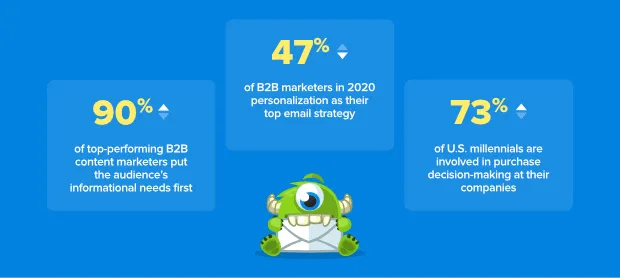
Email marketing in the B2B (business to business) helps in effective communication and lead nurturing strategies. Its benefits are not only direct engagement with potential and existing business clients but also contributing significantly to the overall success of marketing campaigns.
Direct and Personalized Communication
In B2B marketing, the value of building personal connections cannot be overstated. Email marketing facilitates these connections through targeted, personalized communication.
- Targeted Outreach: Segment your email list based on industry, company size, or role in the purchasing process. This ensures that your content is relevant to each segment, increasing the chances of engagement.
- Personalized Content: Personalization can go beyond just addressing the recipient by their name. Customizing content based on the recipient's industry challenges, interests, and previous interactions with your brand can significantly enhance the effectiveness of your campaigns.
Cost-Effective Lead Generation and Nurturing
B2B sales cycles are typically longer and more complex, involving multiple decision-makers. Email marketing offers a cost-effective solution for nurturing these leads through the sales funnel.
- High ROI: Email marketing remains one of the most cost-effective marketing strategies, with a reported ROI of up to $42 for every $1 spent (DMA, 2019). In the B2B sector, where decision cycles are longer, this efficiency is particularly valuable.
- Lead Nurturing: Automated email sequences can guide potential customers through the sales funnel, from awareness to consideration to decision-making. Educating and providing value at each step builds trust and keeps your brand top of mind.
Establishing Thought Leadership
In B2B markets, establishing your brand as a thought leader can set you apart from competitors. Email marketing allows you to share valuable insights, research, and trends directly with your audience through content marketing
- Relevant Content Distribution: Use email newsletters to share your latest blog posts, white papers, or industry reports. This not only provides value to your subscribers but also positions your brand as an authority in your field.
- Webinar Invitations: Hosting webinars on relevant topics is a great way to engage your audience. Email invitations can increase attendance rates and provide an additional touchpoint to demonstrate your expertise.
Measurable Results and Insights
The ability to track and measure the success of b2b marketing campaigns is crucial for any business. Email marketing offers detailed analytics that can help refine strategies over time.
- Analytics and Reporting: Email marketing platforms provide detailed insights into open rates, click-through rates, and conversion rates. This data is invaluable for understanding what resonates with your audience and optimizing future campaigns.
- A/B Testing: Experiment with different subject lines, email content, and calls to action. A/B testing allows you to continuously improve your email marketing efforts based on concrete data.
Long-term Relationship Building
B2B relationships are built on trust and long-term engagement. Email marketing supports this by facilitating regular, meaningful communication to make customer journey better
- Regular Updates: Keep your audience informed about product updates, company news, and relevant industry developments. Consistent communication keeps your brand top of mind without being intrusive.
- Customer Feedback: Email surveys can gather valuable feedback from your clients, offering insights into their needs and how you can serve them better. This two-way communication channel fosters a stronger relationship.
Getting Started with Email Marketing
Email marketing stands out as one of the most direct and personal ways to connect with your audience, offering unparalleled opportunities for growth and engagement.
Email marketing allows businesses to send targeted messages directly to interested parties, fostering better customer relationships and driving sales.
Begin by choosing a reliable email marketing platform that suits your business needs, offering features such as automation, analytics, and integration with other tools.
How to Market with Email
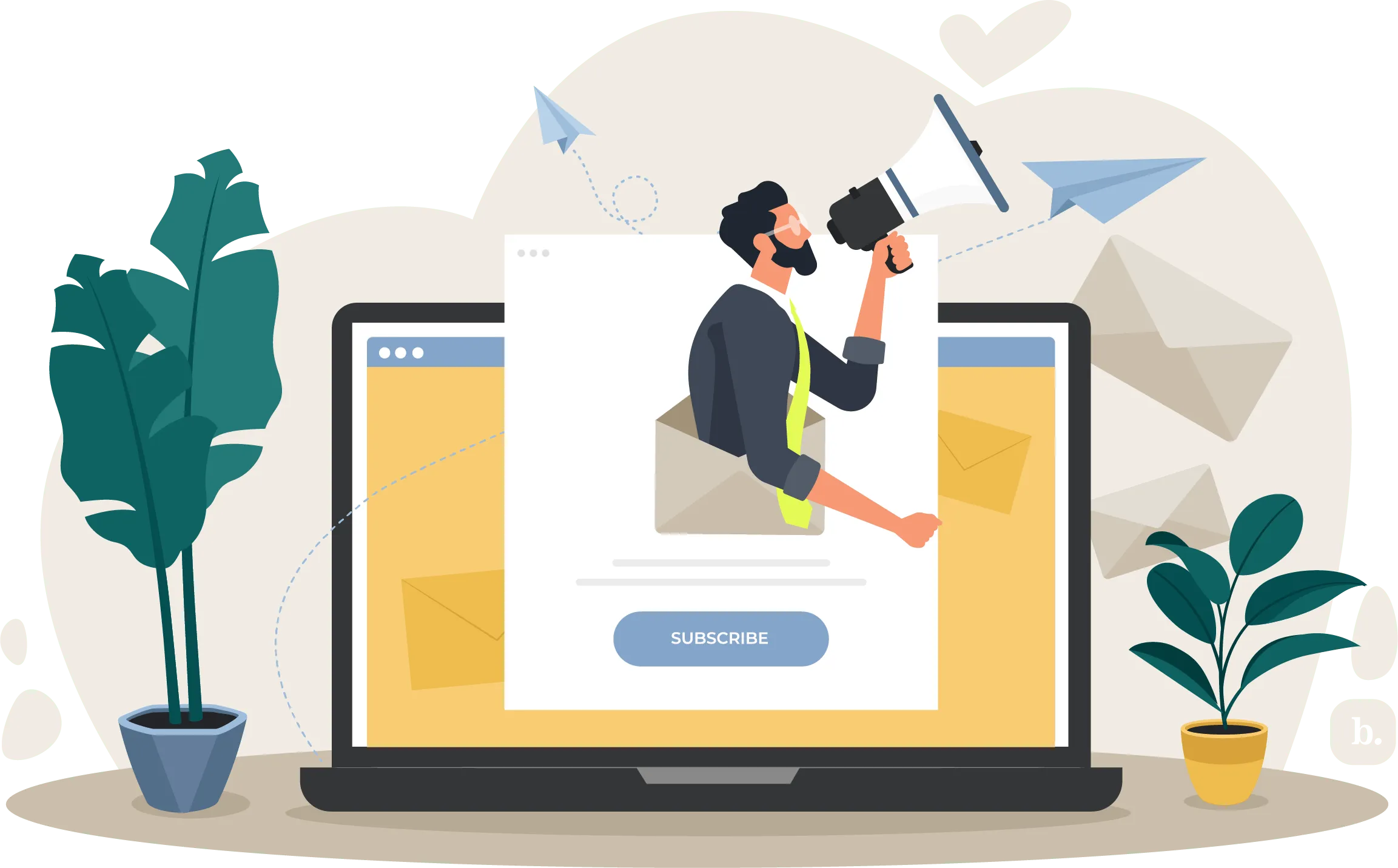
1. Define Your Target Audience and Objectives
Understanding Your Audience:
- Before crafting your emails, it's critical to know who you are talking to. Your target audience could range from industry professionals in B2B email marketing to individual consumers interested in your niche.
Setting Your Goals:
- Objectives might include increasing sales, enhancing brand awareness, or boosting subscriber engagement. Each goal will shape your email marketing strategy differently.
Steps to Define Your Target Audience:
- Conduct Market Research: Gather data on your existing customers and market trends to understand who is interested in your products or services.
- Create Buyer Personas: Develop detailed profiles for different segments of your audience, including demographic information, interests, and pain points.
- Analyze Competitor Audience: Look at your competitors’ marketing efforts to see who they are targeting and how you can differentiate your approach.
Steps to Define Your Objectives:
- Identify Your Marketing Goals: Determine what you want to achieve with your email marketing, such as increasing sales, improving brand awareness, or engaging inactive customers.
- Set SMART Goals: Ensure your goals are defined by being specific, quantifiable, attainable, pertinent, and constrained by time
- Align Objectives with Business Goals: Ensure that your email marketing objectives contribute directly to your overall business goals.
2. Build and Segment Your Email List
Gathering Subscribers:
Building a list of interested subscribers is foundational to email marketing success. This step goes beyond merely collecting emails; it's about inviting people to engage with your brand on a deeper level.
Segmentation for Precision Targeting:
- Once you have a list, the next step is to organize it in a way that allows for targeted communication. Segmentation involves splitting your email list into smaller segments according to particular characteristics, like buying history or geographic area.
Steps to Build Your Email List:
- Opt-In Forms on Your Website: Place sign-up forms strategically across your website (header, footer, blog posts) to capture visitor emails.
- Use Lead Magnets: Offer valuable resources (e-books, whitepapers, webinars) in exchange for email sign-ups to attract subscribers who are interested in your content.
- Promote on Social Media: Utilize social media platforms to motivate your followers to join your email list, emphasizing the unique advantages of becoming a subscriber.
Steps to Segment Your Email List:
- Identify Segmentation Criteria: Determine how to segment your list based on factors like demographics, purchase history, engagement level, or interests.
- Use Email Marketing Software: Utilize the segmentation tools in your email marketing software to create distinct groups within your list.
- Continuously Refine Segments: Regularly review and adjust your segments based on new data or changes in subscriber behavior to ensure relevancy.
Why It Matters:
- Increased Engagement: Emails targeted to a specific segment can result in up to a 760% increase in revenue, according to Campaign Monitor.
- Better Open Rates: Personalized emails, which are made easier through segmentation, have a 26% higher open rate compared to non-personalized ones, per Campaign Monitor.
3. Choose an Email Campaign Type
Exploring Different Campaign Types:
Email marketing offers a variety of campaign types to suit different objectives and stages in the customer journey. Your choice depends on your goals, audience preferences, and the nature of your message.
- Newsletter: Regular updates that keep your audience informed about industry news, tips, or company updates.
- Promotional Emails: Focus on promoting a sale, product launch, or special event.
- Welcome Series: Introduce new subscribers to your brand and set the tone for future communications.
- Re-engagement Campaigns: Aimed at reawakening interest among subscribers who haven't interacted with your emails for a while.
Choosing the Right Campaign:
- Align with Objectives: Your campaign type should directly support your marketing objectives. For example, if your goal is to increase sales, a promotional email highlighting a special offer might be most effective.
- Consider Your Audience: Understand which types of emails your audience prefers and responds to. This may require some testing and analysis of past campaign performance.
Choosing the right type of email campaign allows you to communicate more effectively with your audience, delivering messages that resonate and drive action.
4. Design for Engagement
Creating Visually Appealing Emails:
The design of your email plays a pivotal role in engaging your audience. A well-designed email not only grabs attention but also makes the content easily digestible and the call-to-action (CTA) unmistakable.
Steps to Design Engaging Emails:
- Focus on a Mobile-Friendly Design: Ensure your email design is responsive and looks good on all devices, as a significant portion of users access emails via mobile.
- Use a Clear and Simple Layout: Organize your email content in a way that's easy to scan and understand. Avoid clutter and use white space effectively.
- Incorporate Your Brand Elements: Include your logo, brand colors, and any other elements that help to immediately identify the email with your brand.
- Craft Compelling Content: Write concise, engaging content that directly speaks to your audience's interests and needs. Use headings, bullet points, and short paragraphs to make the content easy to digest.
- Design a Standout Call-to-Action (CTA): Your CTA should be visually prominent and convey a clear, actionable message. Use action-oriented language and buttons to make it easy for readers to take the next step.
- Optimize Images and Media: Use high-quality, relevant images to complement your text and enhance the message. Ensure images are optimized for fast loading.
- Test and Iterate: Use A/B testing for different design elements (like CTA placement, color schemes, or email layouts) to see what resonates most with your audience and adjust your designs based on performance data.
Designing for engagement ensures that once your email is opened, the recipient finds it appealing, understands your message clearly, and feels compelled to take the desired action.
Explore our email templates to gain deeper insights into email design
5. Craft Your Content
Developing Engaging Email Content:
The content of your email is your main avenue to communicate your message, share knowledge, or promote your products and services. How you craft this content can significantly impact the success of your email marketing efforts.
Steps to Craft Engaging Email Content:
- Understand Your Audience: Revisit your audience segments to tailor content that addresses their specific needs, interests, and pain points.
- Define the Purpose of Each Email: Clearly identify what you want to achieve with each email—whether it's to inform, engage, sell, or a mix of these.
- Write a Compelling Subject Line: Craft subject lines that grab attention and encourage opens. Use action words, personalization, and curiosity or urgency when appropriate.
- Create Engaging Preview Text: This is the snippet of text that appears next to your subject line in many email clients. Use it to complement your subject line and provide a teaser that encourages opening the email.
- Structure Your Content for Readability: Use headings, bullet points, and short paragraphs to break up text. Make sure your content is easy to scan and key points stand out.
- Incorporate a Clear Call-to-Action (CTA): Every email should have a purpose. Make it clear what action you want the reader to take with a prominent and straightforward CTA.
6. Deliver Value
Ensuring Your Emails are Worth Opening:
Delivering value through your emails is crucial to maintaining subscriber engagement over time. Emails that consistently offer something beneficial help cultivate a positive relationship with your audience, encouraging loyalty and action.
Steps to Ensure Each Email Delivers Value:
- Offer Exclusive Content: Provide information, tips, or resources that subscribers can't get anywhere else. This reinforces the value of being on your email list.
- Share Solutions, Not Just Sales Pitches: Focus on how your products or services solve problems or improve your subscribers' lives. Frame your offerings around benefits rather than features.
- Personalize the Experience: Use data insights to personalize content, offers, and recommendations. Emails that speak directly to the recipient's needs and interests feel more valuable.
- Engage with Storytelling: Incorporate customer stories, case studies, or narratives about your brand's journey. Stories create emotional connections and can be very persuasive.
- Provide Timely and Relevant Information: Send emails that are relevant to current events, seasons, or specific times in your subscribers' lives or business cycles.
- Regularly Survey Your Audience: Ask your subscribers directly what they want to see in your emails. Use surveys or feedback forms to gather insights and adapt your content strategy accordingly.
- Measure Engagement and Adjust: Use analytics to track how subscribers interact with your emails. Look at open rates, click-through rates, and conversions to understand what content delivers the most value and adjust your strategy based on these insights.
7. Optimize for Conversions
Making Every Email a Step Towards Conversion:
Conversion optimization in email marketing involves fine-tuning various elements of your emails to increase the likelihood that recipients will take a desired action, such as making a purchase or signing up for a webinar.
Steps to Optimize Your Emails for Higher Conversions:
- Personalize Your Emails: Tailor your emails based on the recipient's past behavior, preferences, and data. Use their name and reference their specific interests or past purchases.
- Craft Clear and Compelling CTAs: Your call-to-action should stand out and tell the recipient exactly what you want them to do. Use action-oriented language and make the CTA button or link easy to find.
- Use Urgency and Scarcity: Create a sense of urgency or scarcity for your offers (e.g., limited time, limited stock) to encourage quick action from the recipients.
- Optimize Email for Mobile: Ensure your emails are responsive and look good on all devices since a significant portion of users reads emails on their mobile phones.
- Segment Your Audience: Send targeted emails based on user segmentation to increase relevance and conversion rates. Tailor messages according to demographics, behavior, or purchase history.
- Test and Refine Your Strategy: Utilize A/B testing to try different email elements (subject lines, email copy, images, CTA placements) and analyze what works best. Continuously refine based on performance data.
- Follow Up on Non-Conversions: Send follow-up emails to recipients who didn't convert but showed interest, perhaps by opening the email or clicking a link, to nudge them towards conversion.
8. Use the Right Email Marketing Software
Choosing a Platform That Meets Your Needs:
The right email marketing software can make a significant difference in the efficiency and effectiveness of your campaigns. It should not only facilitate the design and distribution of your emails but also provide tools for automation, analytics, and integration with other marketing tools.
- Automation Features: Look for software that offers automation capabilities, allowing you to send triggered emails based on actions (like website visits or past purchases) or milestones (such as birthdays).
- Analytics and Reporting: Understanding how your campaigns perform is crucial. Your chosen platform should offer detailed analytics on open rates, click-through rates, conversions, and more, enabling you to make data-driven decisions.
- Integration: Ensure the software integrates smoothly with your CRM, e-commerce platform, or other marketing tools. This integration can provide a more cohesive view of your customer interactions across different channels.
- Scalability: Choose a platform that can grow with your business. Whether you're sending a few hundred emails or several thousand, your software should be able to handle your needs without a significant increase in cost or complexity.
Types of Email Campaigns to Market Your B2B Business
Educational Content Emails
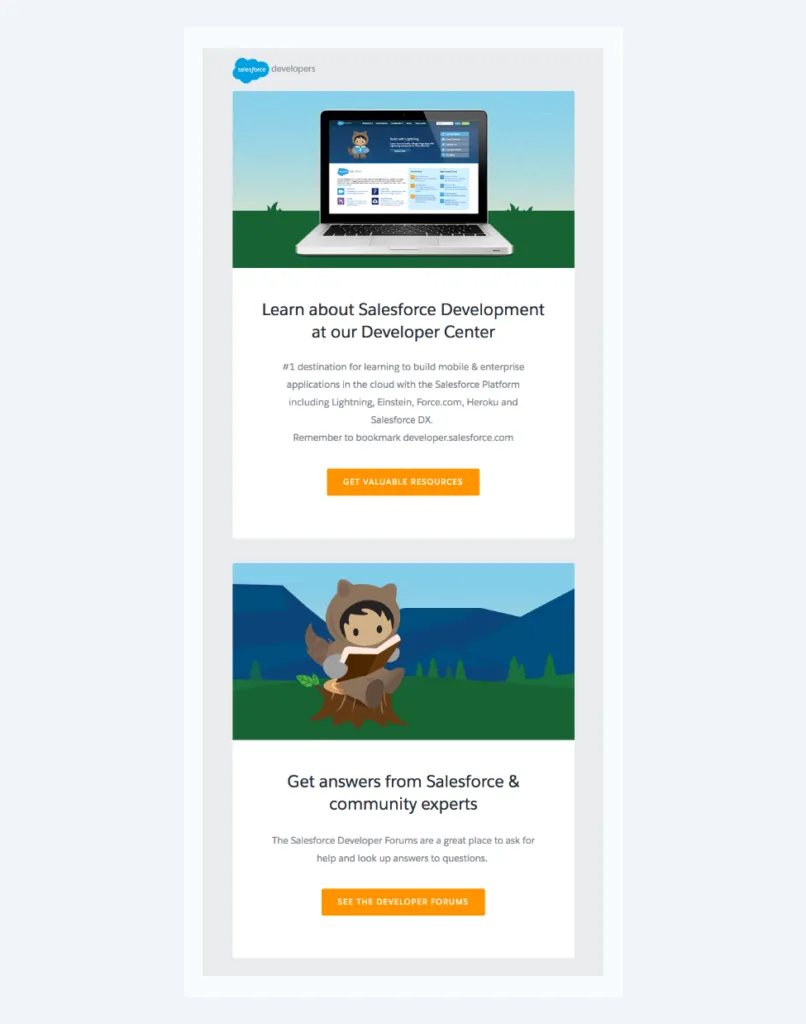
Educational content emails focus on providing valuable information that addresses the needs and challenges of your target audience. They're about teaching rather than selling.
Why They're Effective:
- Position your brand as a thought leader in your industry.
- Build trust with your audience by offering them valuable information without a direct sales pitch.
How to Implement:
- Identify the most common questions or challenges your target audience faces.
- Create content that addresses these questions, such as how-to guides, industry insights, or case studies.
- Regularly schedule these emails to keep your audience engaged and educated.
Welcome Series
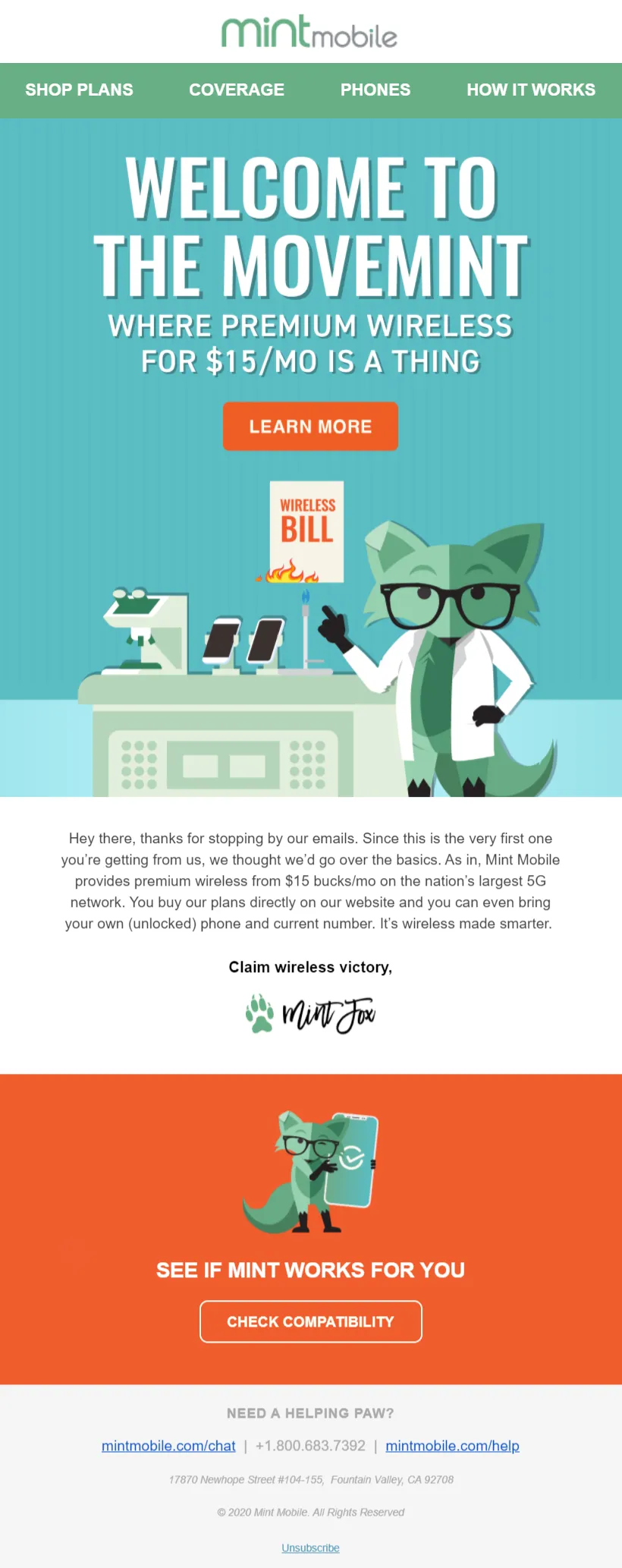
A Welcome Series is your first interaction with new subscribers. It sets the tone for your relationship and begins the process of engaging them with your brand.
Why It’s Crucial:
- First impressions matter. A well-crafted Welcome Series can significantly impact subscriber engagement and retention.
- It’s an opportunity to introduce your brand, your values, and what subscribers can expect from your emails.
How to Execute:
- Start with a thank you message and a brief introduction to your brand.
- Follow up with emails that showcase your best content, products, or services.
- Include clear calls to action, guiding new subscribers to the next steps they should take, whether it's learning more about your services or accessing exclusive content.
Lead Nurturing Sequences
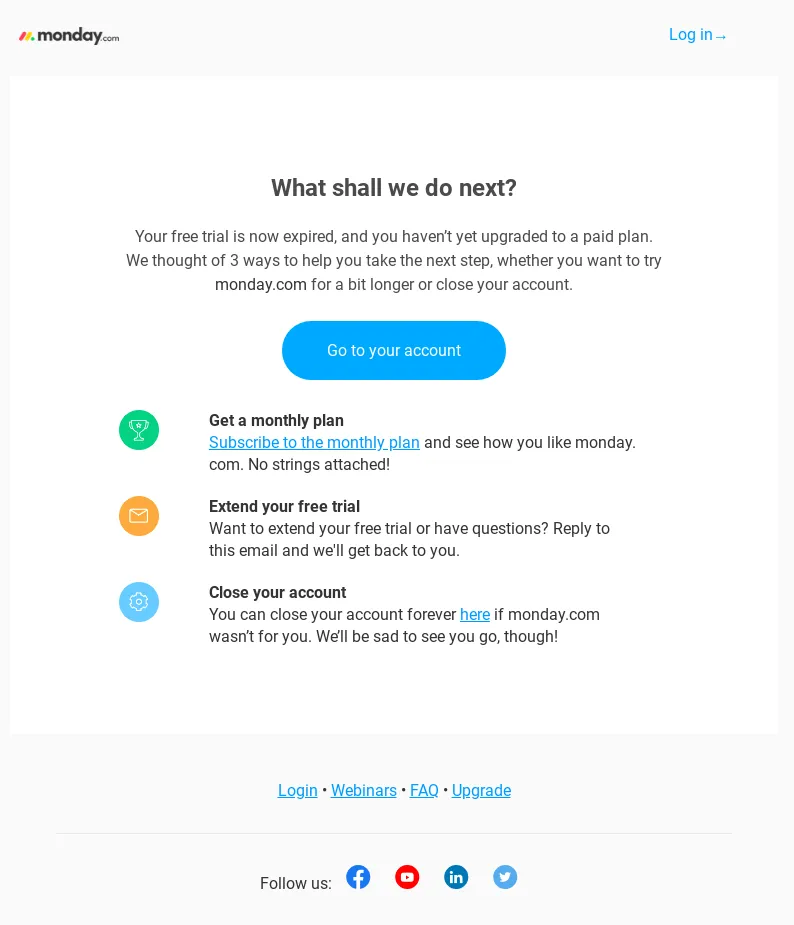
Lead nurturing sequences are designed to move potential customers through the sales funnel, from awareness to decision-making.
Why They're Vital:
- B2B sales cycles are often long and complex, involving multiple decision-makers. Lead nurturing helps maintain interest and engagement over time.
- Personalized nurturing sequences can increase sales opportunities by more than 20% (Forrester Research).
Effective Strategies:
- Segment your leads based on their interests, behaviors, and place in the sales funnel.
- Craft a series of emails that provide increasingly targeted information, demonstrating your understanding of their specific needs and how your product or service can meet them.
- Include testimonials or case studies to provide social proof and reduce perceived risk.
Case Studies and Testimonials
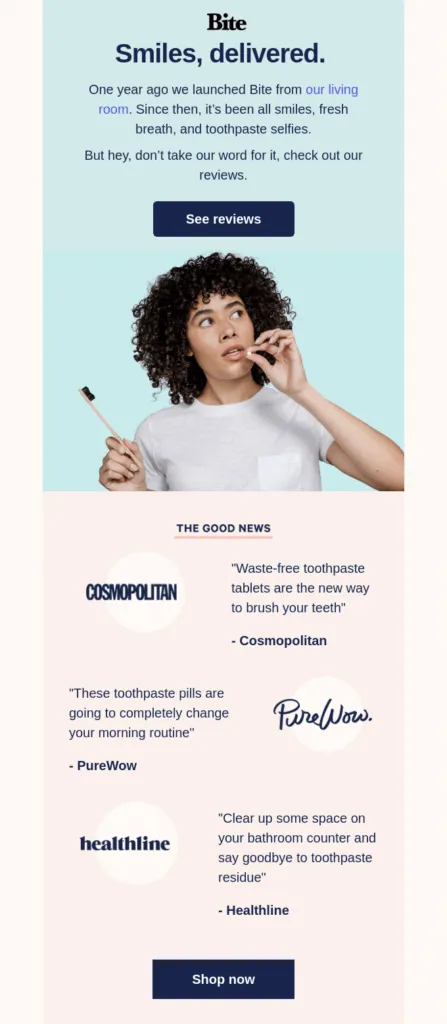
Leveraging the power of storytelling through case studies and showcasing real-world successes with testimonials can significantly bolster your brand's credibility and trustworthiness.
Why They're Impactful:
- Build Trust: Seeing real results from real customers removes doubts and builds trust in your solutions.
- Social Proof: Testimonials serve as social proof, influencing decision-makers by showing the success of their peers.
Implementation Strategies:
- Gather impactful customer stories and articulate how your product or service solved a specific problem.
- Include quotes and metrics that highlight the benefits and outcomes of using your service or product.
Newsletters

Regular newsletters keep your audience informed and engaged with your brand, offering a mix of content that educates, entertains, and updates.
Benefits of Newsletters:
- Consistent Engagement: A regular touchpoint that keeps your brand top of mind.
- Versatility: Can include a variety of content, from industry news to product updates and thought leadership articles.
Best Practices:
- Ensure content is relevant and adds value, avoiding overly salesy messages.
- Segment your audience to tailor content more closely to their interests and needs.
Re-engagement Campaigns
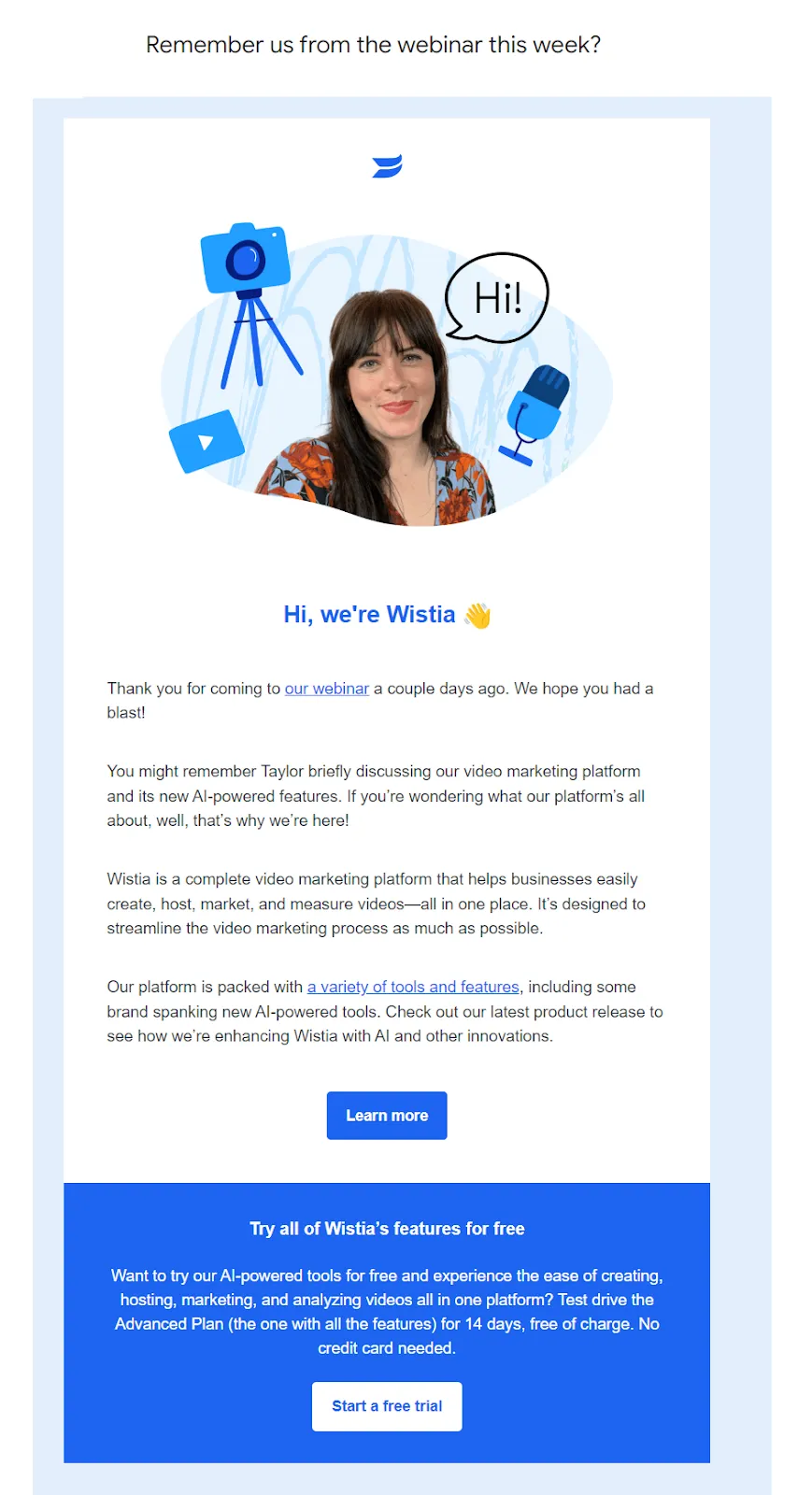
Re-engagement campaigns are designed to awaken dormant subscribers, rekindling their interest in your brand and offerings.
Significance of Re-engagement:
- Revitalize Interest: Helps bring back subscribers who may have lost touch but are still valuable leads.
- List Hygiene: Improves email deliverability by reducing the number of inactive subscribers.
Effective Approaches:
- Send personalized emails reminding them of the value you offer and what they’ve been missing.
- Offer special incentives or exclusive content to reignite their interest.
Customer Feedback and Surveys
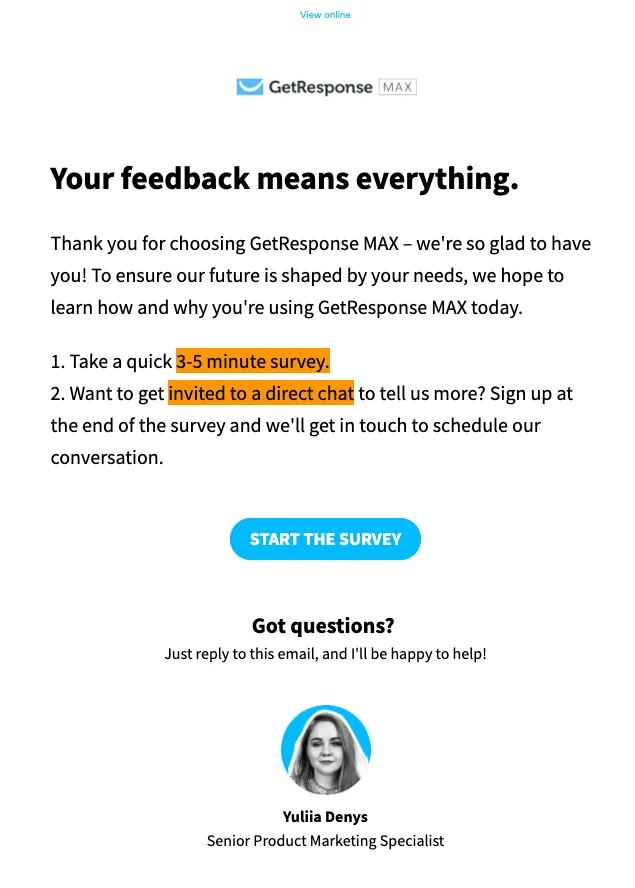
Soliciting feedback through emails demonstrates that you value your customers' opinions and are committed to improvement and customer satisfaction.
Why Feedback is Crucial:
- Insightful Data: Provides direct insights into customer satisfaction and areas for improvement.
- Engagement: Engages customers in a two-way conversation, enhancing their connection to your brand.
How to Execute:
- Keep surveys short and to the point to respect your customers' time.
- Offer an incentive for completing surveys to increase participation rates.
How to Send Marketing Emails
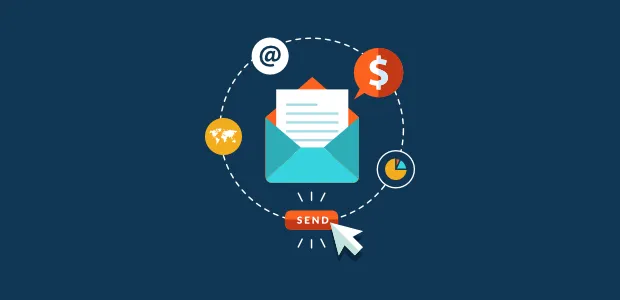
Effective email marketing requires more than just crafting messages and hitting send. To truly engage your audience and optimize your campaigns for the best outcomes, you must delve into strategies
Here's how you can implement these strategies to enhance your email marketing efforts.
Enhance Engagement Through Email Segmentation
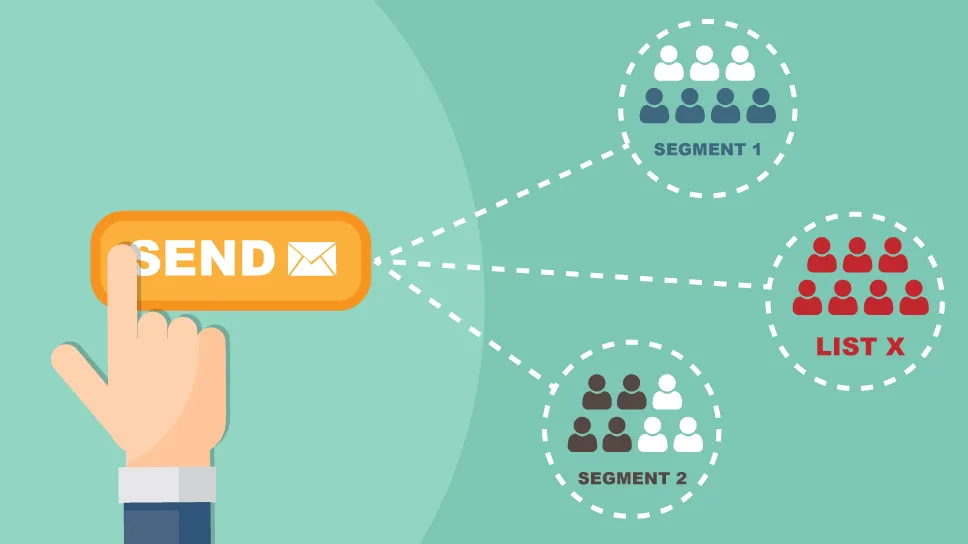
Dividing your email subscribers into smaller, distinct groups based on certain criteria is what segmentation entails. This approach allows for the delivery of emails that are more tailored and pertinent to each group.
Benefits of Segmentation:
- Increased open rates: Marketers have noted a 14.31% higher open rate in segmented campaigns compared to non-segmented ones (Mailchimp).
- Enhanced relevance: Tailoring your message to different segments ensures that your audience receives content that is relevant to their interests and needs.
How to Implement Segmentation:
- Criteria for Segmentation: Consider segmenting your list by demographics, purchase history, engagement level, or even by customer behavior on your website.
- Tools and Tactics: Use your email marketing platform's tools to segment your lists. Regularly update your segments based on new data to keep your campaigns as relevant as possible.
Optimize with A/B Testing
A/B testing, or split testing, involves sending two variations of your email to a small portion of your list to see which performs better before sending the winning version to the rest of your list.
- Better engagement: A/B testing can help you fine-tune your emails for higher open and click-through rates.
- Evidence-based decisions: Make changes based on data rather than assumptions.
A/B Testing Best Practices:
- Variables to Test: Test one variable at a time, such as subject lines, email content, CTA buttons, or send times.
- Analyzing Results: Use statistical significance to determine the winner. Most email marketing platforms provide tools to help with this analysis.
Analyzing Email Marketing Performance
To continually improve your email marketing strategy, it’s crucial to analyze your campaign performance. This analysis can guide your future campaigns, helping you make data-driven decisions.
Key Metrics to Track:
- Open Rate: The percentage of recipients who opened your email. This metric can give you insight into the effectiveness of your subject lines.
- Click-Through Rate (CTR): The percentage of recipients who clicked on one or more links contained in your email. CTR can help gauge the relevance and quality of your content and CTAs.
- Conversion Rate: The percentage of recipients who took a desired action after clicking a link in your email, such as making a purchase.
Leveraging Insights for Improvement:
- Identify what resonates with your audience by looking at the performance of different segments, subject lines, and content types.
- Use these insights to refine your segmentation, personalize your emails further, and optimize your email design and content.
Tools and Techniques:
- Most email marketing platforms offer comprehensive analytics dashboards. Familiarize yourself with these tools to get the most out of your data.
- Consider integrating your email platform with other tools like Google Analytics for a deeper analysis of how email campaigns contribute to your overall marketing goals.
Establish Clear Email Marketing KPIs
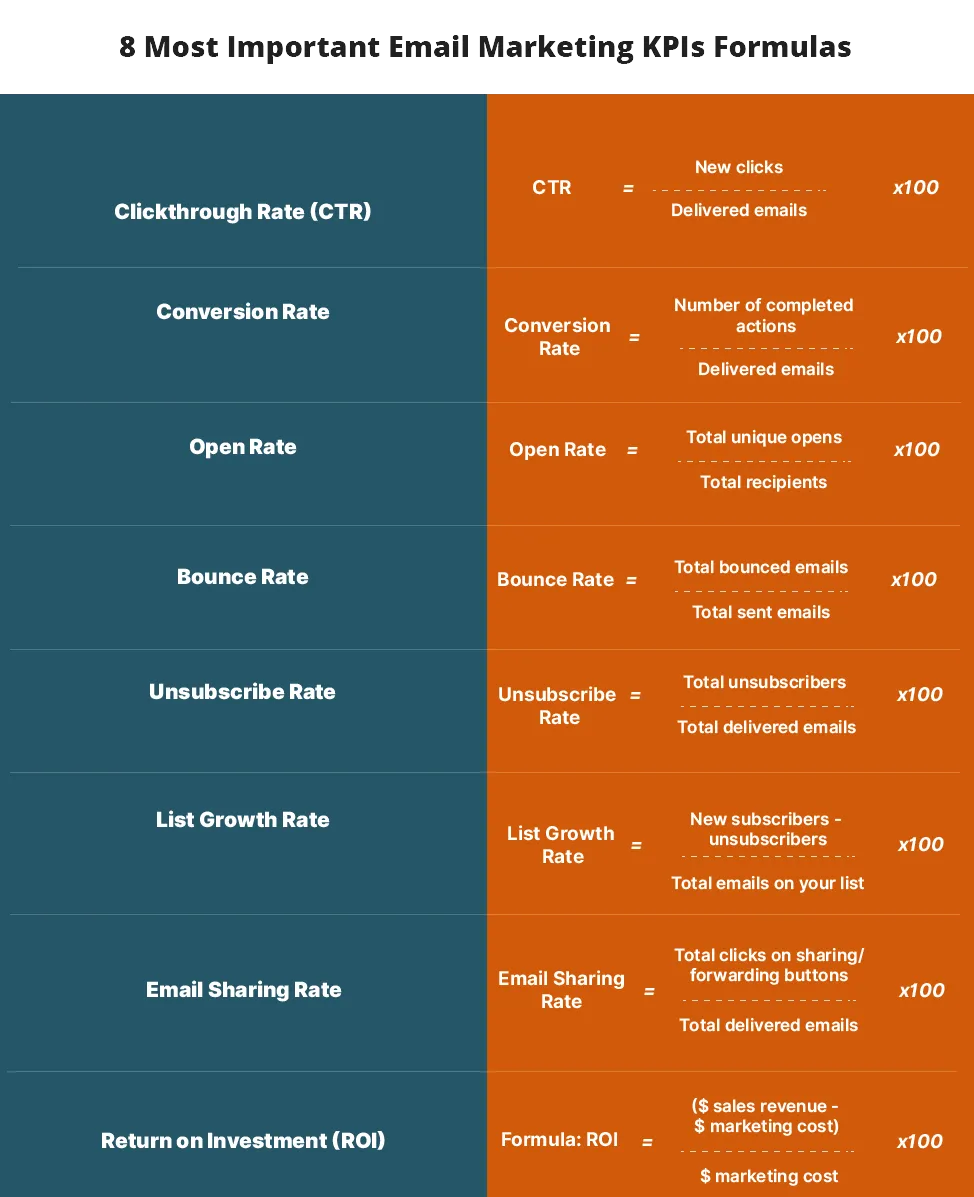
Setting specific KPIs for your email marketing campaigns helps you measure success and align your efforts with broader business objectives.
Importance of Setting KPIs:
- Direction: KPIs provide a clear focus for what your email campaigns should achieve.
- Measurement: They enable you to gauge the effectiveness of your strategies and make data-driven decisions.
Key Email Marketing KPIs to Track:
- Engagement KPIs: These include open rates, click-through rates (CTR), and email sharing rates. They measure how your audience interacts with your emails.
- Conversion KPIs: Look at conversion rates and the overall ROI of your email campaigns. These metrics assess the bottom-line impact of your emails.
- Growth KPIs: Track list growth rate, bounce rate, and unsubscribe rate to understand how your audience is evolving over time.
Continuously Refine Email Components
Adjusting various elements of your emails based on performance feedback is crucial for optimizing your campaigns.
Why Refine Email Components:
- Responsiveness: Adaptation ensures your emails stay relevant and engaging to your audience.
- Optimization: Continuous refinement helps improve KPIs, directly affecting your campaign's success.
Components to Adjust:
- Subject Lines: Test different styles and tones to see what leads to higher open rates.
- Email Content and Design: Experiment with different formats, lengths, and visual elements to enhance engagement and conversions.
- CTAs: Variations in CTA text, design, and placement can significantly impact click-through and conversion rates.
Utilize an Email Marketing Report Template
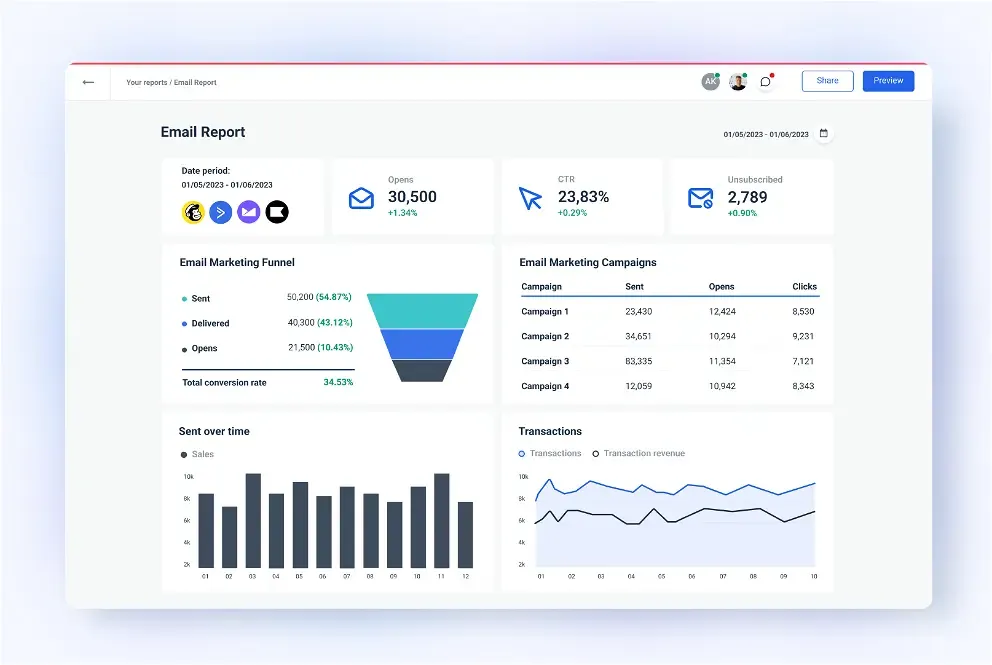
Consistent and structured reporting is essential for tracking progress, sharing insights with your team, and guiding strategic decisions.
Benefits of Using a Report Template:
- Efficiency: Save time with a standardized report format that highlights the most important information.
- Clarity: A clear, consistent format makes it easier to compare performance over time and identify trends.
What to Include in Your Report Template:
- Performance Overview: Summarize key metrics like open rates, CTR, and conversion rates.
- Segmentation Insights: Provide analysis on how different segments perform to tailor future campaigns.
- Comparative Analysis: Include period-over-period performance to track progress and identify patterns.
- Actionable Insights: Highlight what worked well and what didn’t, along with recommendations for future campaigns.
Tools and Resources:
- Many email marketing platforms offer built-in reporting tools that can be customized to fit your needs. Alternatively, tools like Google Sheets or Excel can be used to create a tailored reporting template.
6 Best B2B Email Marketing Strategies
Developing a successful B2B email marketing strategy requires attention to detail, creativity, and a deep understanding of your audience's needs. Here's how to enhance your strategy further:
1. Never Buy Email Lists
The Importance of Building Your Own List:
- Trust and Relevance: Emails sent to a purchased list are more likely to be marked as spam, damaging your sender reputation and deliverability rates.
- Legal Compliance: Buying lists can lead to violations of email regulations like GDPR, resulting in hefty fines.
Building Your Own List:
- Leverage your blog post and social media marketing to drive traffic to your website and encourage email sign-ups.
- Offer valuable resources (e.g., whitepapers, ebooks) as an incentive for signing up.
2. Use Double Opt-in Signup Forms

Enhancing List Quality and Engagement:
- Better Engagement Rates: Double opt-in ensures that your subscribers are genuinely interested in your content, leading to higher open and click-through rates.
- Reduced Bounce Rates: It verifies the email address is correct, reducing the number of bounced emails.
Implementing Double Opt-in:
- After the initial sign-up, send an automated email asking the subscriber to confirm their subscription.
- Utilize digital marketing tools to streamline the double opt-in process, ensuring a smooth user experience.
3. Personalize Your Marketing Emails
Driving Engagement Through Personalization:
- Increased Open Rates: Personalized email subject lines are 26% more likely to be opened.
- Higher Conversion Rates: Emails with personalized content based on the recipient's interests and behaviors can significantly increase the likelihood of conversion.
Strategies for Personalization:
- Use data collected from your website, digital interactions, and email marketing software to segment your audience and tailor your messages.
- Write compelling subject lines that resonate with the recipient's specific needs or interests.
- Incorporate personalization tokens (e.g., name, company name) within the email content and subject lines to create a sense of direct communication.
Integrating With Other Marketing Efforts:
- Combine email marketing with your social media marketing efforts to create a cohesive digital marketing strategy. Cross-promote content across channels to increase visibility and engagement.
- Use insights from digital marketing tools to understand your audience's behavior across platforms, allowing for more targeted and personalized email campaigns.
4. Measure Your Success with Email Marketing Metrics
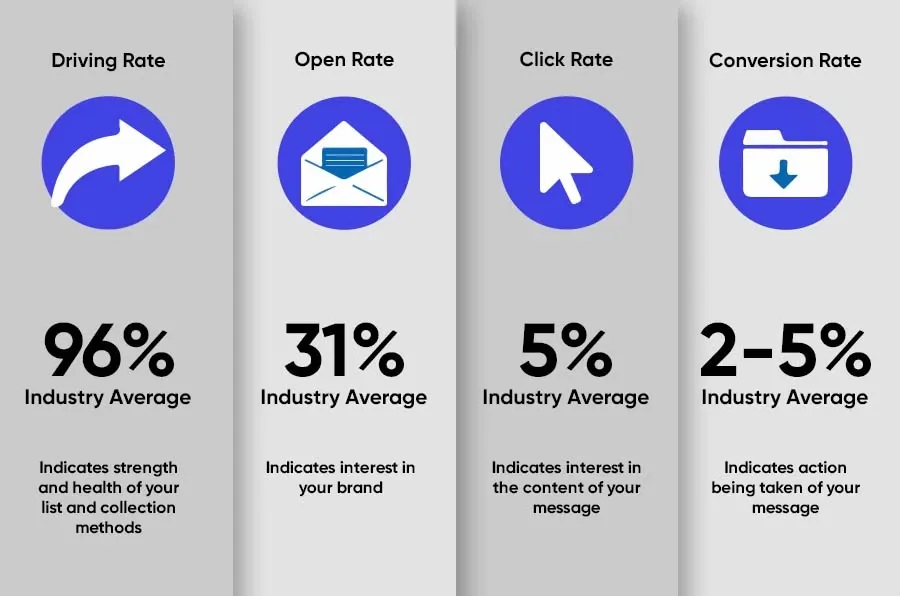
Understanding and Leveraging Key Metrics:
- Open Rate: Measures the percentage of recipients who opened your email, giving you insight into the effectiveness of your subject lines and the overall interest of your audience in your brand.
- Click-Through Rate (CTR): The percentage of email recipients who clicked on one or more links contained in an email. This metric is crucial for understanding how engaging your email content is and which calls-to-action are performing best.
- Conversion Rate: Tracks the percentage of email recipients who completed a desired action, such as filling out a form or purchasing a product, indicating the ultimate effectiveness of your email campaigns.
How to Use Metrics to Improve Your Strategy:
- Analyze which types of content and which subject lines yield the best open and click-through rates to refine your content strategy.
- Use A/B testing on a segment of your audience to compare different approaches and systematically improve your email performance.
5. Craft Effective Email Subject Line
Creating Subject Lines That Drive Open Rates:
- Be Clear and Concise: Your subject line should clearly state the value or proposition of your email in a few words as possible.
- Incorporate Urgency or Curiosity: Phrases that suggest limited time offers or pose intriguing questions can increase open rates by creating a sense of urgency or curiosity.
- Personalization: Including the recipient’s name or other personal details can make the email feel more tailored and increase the likelihood of it being opened.
Testing and Refining:
- Regularly test different styles of subject lines with small segments of your audience to see what works best, continually refining your approach based on the data.
6. Optimize Email Deliverability
Ensuring Your Emails Reach the Inbox:
- Authenticate Your Emails: Use SPF, DKIM, and DMARC protocols to verify your domain and improve your emails' legitimacy and deliverability.
- Maintain a Clean Email List: Regularly remove inactive subscribers and incorrect email addresses to maintain a high-quality list and reduce bounce rates.
- Avoid Spam Triggers: Be mindful of words and phrases that are commonly associated with spam. Overuse of words like "free," "guarantee," or excessive use of caps and exclamation points can trigger spam filters.
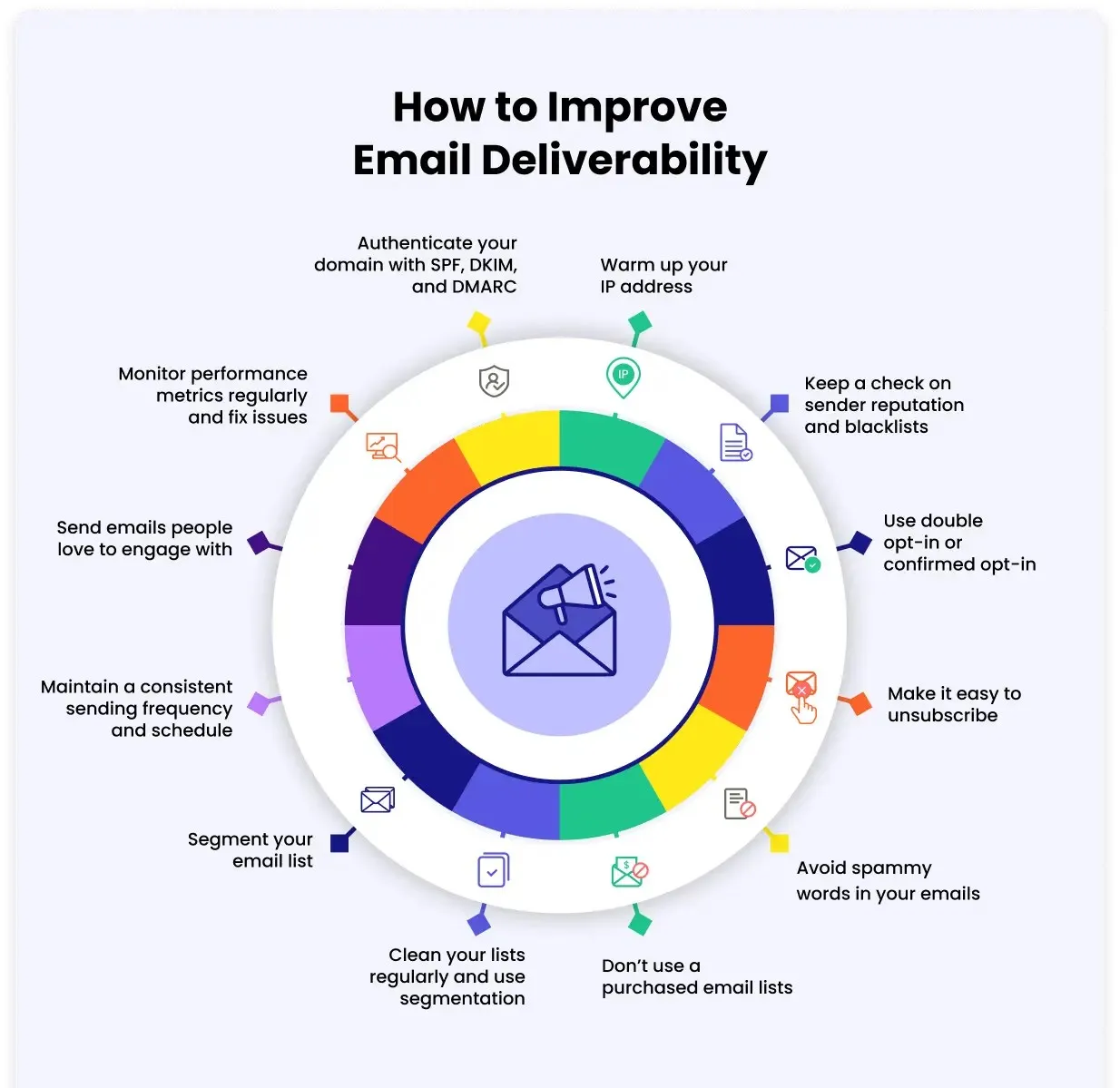
Monitor Your Sender Reputation:
- Keep an eye on your sender score, which reflects the trustworthiness of your sending domain. A lower score can affect your deliverability rates across all recipients.
Email Regulations You Should Know
In email marketing, understanding and adhering to regulations is crucial for maintaining the trust of your subscribers and avoiding legal pitfalls. Here’s an overview of key email regulations you should be familiar with:
1. Adhering to the CAN-SPAM Act
Ensuring Compliance with U.S. Email Laws:
- Provide a Clear Way to Opt-Out: Each email must contain an easy-to-find link that allows recipients to unsubscribe from your mailing list.
- Accurate Subject Lines: The subject line must accurately reflect the content of the email, avoiding misleading or deceptive headlines.
- Legitimate Header Information: Sender's name and email address must be accurate, identifying the person or business who initiated the email.
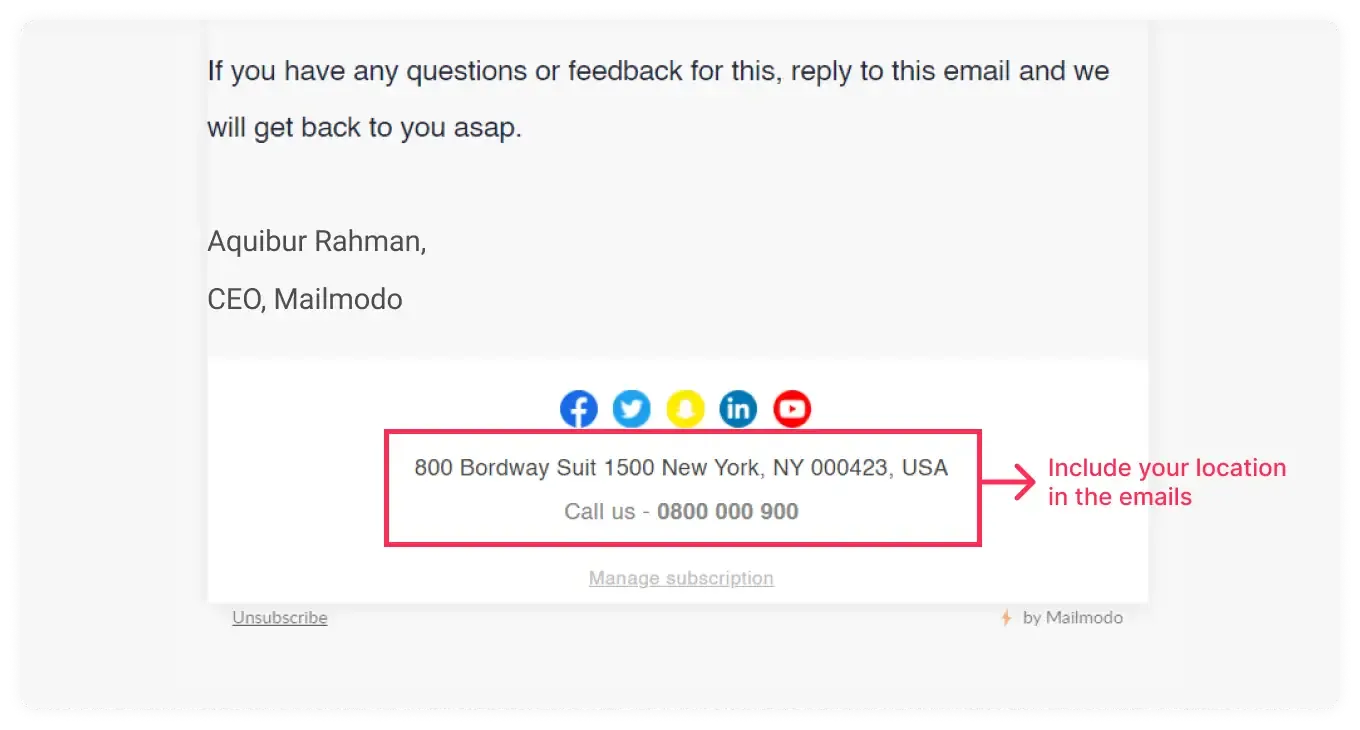
Key Takeaways for CAN-SPAM Compliance:
- Non-compliance with the CAN-SPAM Act can result in hefty fines, emphasizing the importance of adherence to these guidelines for businesses operating in or sending emails to the U.S. audience.
2. Complying with the General Data Protection Regulation (GDPR)

European Privacy and Data Protection:
- Consent for Email Collection: GDPR requires explicit consent for collecting email addresses and using them for email marketing. The consent mechanism should be clear, specific, and documented.
- Right to Access and Erasure: Individuals have the right to access the data you have on them and can request deletion of their data from your records.
- Data Protection Measures: Implement adequate security measures to protect the personal data you collect and process.
Implementing GDPR Best Practices:
- GDPR compliance not only protects your EU-based subscribers but also enhances your email marketing practices by fostering transparency and trust.
3. Strategies to Circumvent Spam Filters
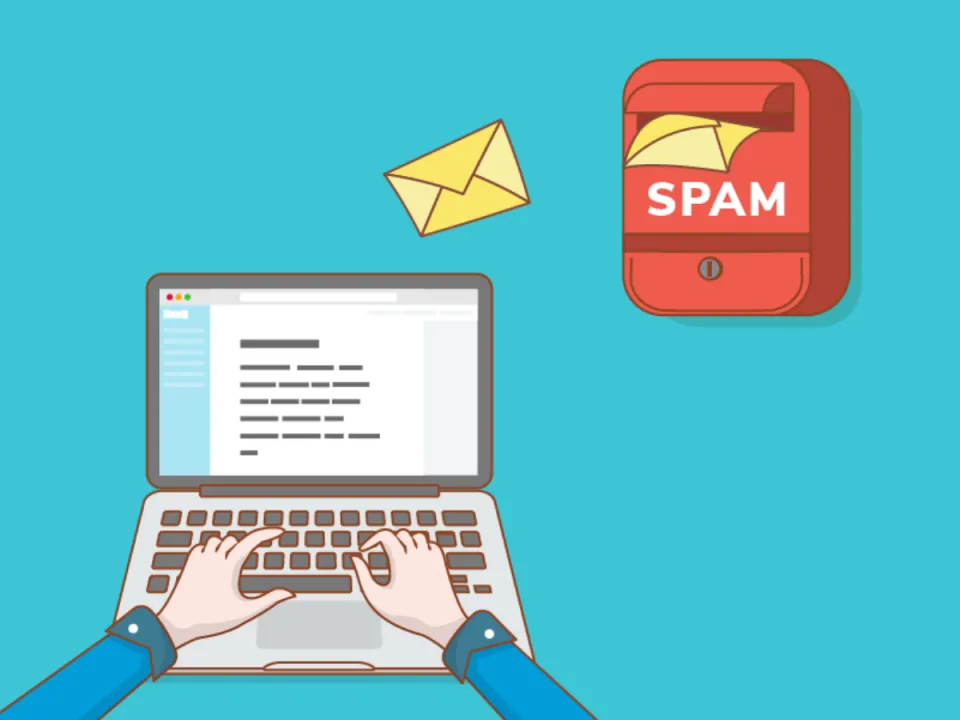
Maximizing Email Deliverability:
- Mind Your Content: Avoid using excessive capitalization, multiple exclamation marks, and spam trigger words that could flag your email as spam.
- Maintain a Healthy Sender Reputation: Regularly clean your email list of inactive subscribers and ensure your emails are consistently engaged with by recipients.
- Authenticate Your Emails: Use email authentication standards like SPF, DKIM, and DMARC to prove to email providers that your emails are legitimate and should be delivered to the inbox.
Benefits of Avoiding Spam Filters:
- By understanding how spam filters work and taking steps to avoid them, you can significantly increase the chances of your emails reaching your subscribers’ inboxes, thereby improving your open and engagement rates.
Concluding Thoughts
To wrap up, B2B email marketing is a powerful way to connect with customers, share valuable information, and grow your business. By using different types of email campaigns, such as educational emails, welcome messages, and feedback requests, you can keep your audience engaged and informed.
Remember to segment your audience for more personalized messages, test different email elements to see what works best, and always keep an eye on your campaign's performance to make improvements. In short, successful email marketing is about delivering value to your customers, keeping your content relevant, and building strong relationships over time.

